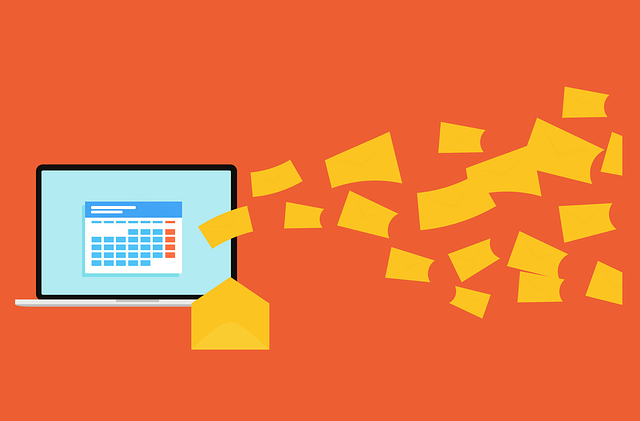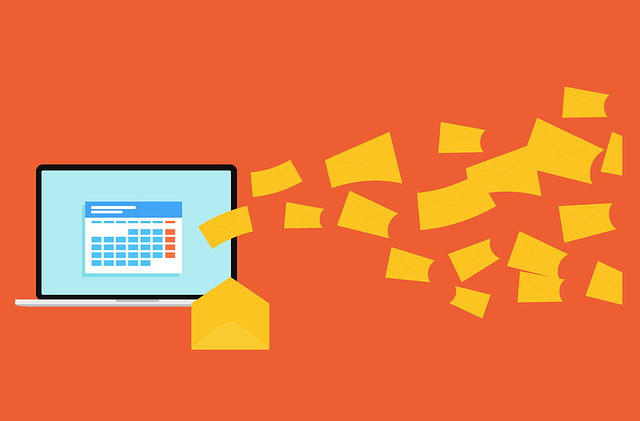‘Time is money.’ This age-old adage holds true in the fast-paced world of business, where every second counts. When it comes to reaching your customers and driving sales, email is a powerful tool at your disposal.
But with so many strategies available, how do you choose the best one for your business? Enter email automation and email marketing. These two approaches offer distinct advantages and can help you achieve your goals efficiently.
Email automation enables you to streamline your communication process, saving you time and effort. On the other hand, email marketing allows you to craft personalized messages that resonate with your audience.
But which strategy is right for you? In this article, we will explore the differences between email automation and email marketing, compare their costs and efficiencies, and help you make an informed decision that aligns with your business objectives.
Get ready to take your email game to the next level and maximize your success.
Key Takeaways
- Email automation and email marketing are both effective strategies for reaching customers and driving sales.
- The choice between email automation and email marketing depends on factors such as budget, staff capabilities, and technology infrastructure.
- Email automation saves time and resources by automating manual work and increasing customer engagement and conversion rates.
- Email marketing allows for personalized content, reaching a wide audience, and tracking metrics to optimize ROI.
Understanding Email Automation
Imagine having a virtual assistant that works tirelessly behind the scenes, sending personalized emails to your customers at just the right time – that’s the power of email automation. With email automation, you can streamline your marketing efforts and achieve higher efficiency.
One of the key benefits of automation is that it saves you time and effort. By setting up automated workflows, you can send targeted emails based on specific triggers or actions taken by your customers. This not only increases engagement but also nurtures your leads and drives conversions.
To make the most out of email automation, it’s essential to follow best practices. This includes segmenting your audience, personalizing your emails, and tracking the performance of your campaigns. By leveraging the benefits of automation and implementing best practices, you can maximize the impact of your email marketing efforts.
Now, let’s explore the power of email marketing.
The Power of Email Marketing
Discover the incredible impact that harnessing the power of targeted messaging can have on your business growth.
Email marketing is a powerful tool that allows you to reach a wide audience with personalized and relevant content. By leveraging effective strategies such as segmentation and personalization, you can create engaging and impactful email campaigns that drive conversions and customer loyalty.
One of the powerful benefits of email marketing is its ability to deliver a high return on investment. In fact, studies have shown that for every $1 spent on email marketing, the average return is $42.
With such impressive statistics, it’s clear that email marketing can be a game-changer for your business. So, as you move forward in identifying your goals and resources, consider the immense potential that email marketing holds for your success.
Identifying Your Goals and Resources
Take a moment to reflect on your business goals and the resources you have available to achieve them, such as budget, staff, and technology. For example, imagine you’re a small boutique clothing store looking to increase online sales, but you have limited staff and a tight marketing budget.
To identify your goals and allocate resources effectively, consider the following:
-
Define your objectives: Determine what you want to achieve with your email strategy, whether it’s increasing sales, driving website traffic, or building brand loyalty.
-
Assess your budget: Evaluate how much you can allocate to email marketing, taking into account the cost of tools, software, and potential outsourcing.
-
Evaluate your staff capabilities: Consider the skills and expertise of your team. Can they handle email automation or do you need to invest in training or hiring additional staff?
-
Analyze your technology infrastructure: Assess your current email marketing tools and technology to determine if they align with your goals and can support your desired level of automation.
By identifying your goals and allocating resources effectively, you can make informed decisions about whether email automation or email marketing is the best strategy for your business.
Now, let’s move on to comparing costs and efficiencies.
Comparing Costs and Efficiencies
When considering the cost of email automation, you need to look at factors such as the initial setup costs, monthly subscription fees, and any additional costs for advanced features or integrations.
On the other hand, email marketing costs can vary depending on the size of your email list, the frequency of your campaigns, and the design and content creation expenses.
By comparing the costs and efficiencies of email automation and email marketing, you can make an informed decision on which strategy best aligns with your budget and goals.
Cost Considerations of Email Automation
The cost of email automation can be a major factor to consider when deciding between email automation and email marketing. When weighing the benefits of email automation, it’s important to conduct a thorough ROI analysis.
Here are two key aspects to consider:
-
Time and resource savings:
- With automation, you can save hours of manual work by setting up pre-designed workflows and triggers.
- Automated emails can be personalized at scale, increasing customer engagement and conversion rates.
-
Increased revenue potential:
- According to a study by DMA, automated emails have an average open rate of 45.7% and click-through rate of 10.75%.
- With higher engagement rates, you have a greater chance of generating revenue from your email campaigns.
Considering these factors, email automation can be a cost-effective strategy that delivers impressive results. However, it’s important to also explore the cost considerations of email marketing to make a well-informed decision.
Cost Considerations of Email Marketing
Considering the expenses involved, investing in email marketing can be like planting seeds in a well-tended garden, where careful nurturing and targeted campaigns can yield fruitful results.
While email marketing does incur costs, it can be a highly cost-effective strategy for businesses of all sizes. Compared to traditional marketing methods, email marketing costs significantly less, allowing you to reach a larger audience without breaking the bank. Additionally, with the ability to track metrics such as open rates, click-through rates, and conversion rates, you can easily measure the effectiveness of your email campaigns and make data-driven decisions to optimize your ROI.
By using personalized and targeted email campaigns, you can further increase your chances of success. Transitioning into the next section, personalization and targeting play a crucial role in maximizing the impact of your email marketing efforts.
Personalization and Targeting
When it comes to customization options in email automation, you have the power to personalize your messages based on individual customer preferences and behaviors. This level of customization allows you to create highly targeted and relevant content that resonates with your audience.
On the other hand, email marketing offers a variety of targeting strategies that can help you reach the right people at the right time, whether it’s through segmenting your audience based on demographics, interests, or past interactions.
By leveraging both customization options in email automation and targeting strategies in email marketing, you can maximize the effectiveness of your email campaigns and drive better results.
Customization Options in Email Automation
Explore the vast array of customization options available in email automation, and let your creativity soar like a flock of free-spirited birds. With personalized campaigns and segmentation strategies, you can engage your audience in a more meaningful way.
Here are four customization options that can take your email automation to the next level:
-
Dynamic Content: Tailor your emails to each recipient by dynamically inserting personalized content based on their preferences or behavior.
-
Conditional Logic: Use if-then statements to create dynamic email flows that adjust based on specific conditions, such as whether a customer has made a purchase or abandoned their cart.
-
Personalized Recommendations: Leverage customer data to provide tailored product recommendations, increasing the chances of conversion.
-
A/B Testing: Experiment with different email designs, subject lines, or calls to action to identify the most effective elements for your audience.
By harnessing these customization options, you can optimize your email automation strategy and seamlessly transition into targeting strategies in email marketing.
Targeting Strategies in Email Marketing
Get ready to supercharge your email marketing campaigns with targeted strategies that will captivate your audience and drive impressive results.
Segmentation techniques and behavioral targeting are essential tools that can take your email marketing to the next level. By segmenting your email list based on specific criteria such as demographics, purchase history, or engagement level, you can send personalized content that resonates with each subscriber. This not only increases open and click-through rates but also boosts conversion rates.
Behavioral targeting allows you to track and analyze user behavior to send timely and relevant emails based on their actions. By leveraging these strategies, you can deliver highly targeted messages that grab your audience’s attention and drive them to take action.
Now, let’s explore how these techniques can help you make the right choice for your business.
Making the Right Choice for Your Business
When considering whether email automation or email marketing is the best strategy for your business, there are several factors to take into account.
Factors such as your target audience, budget, resources, and objectives should all be considered in the decision-making process.
Additionally, successful implementation of either strategy requires careful planning, testing, and monitoring to ensure optimal results.
Factors to Consider in Decision Making
Considering various factors when making a decision between email automation and email marketing, one example to consider is the case of a small e-commerce business that experienced a significant increase in sales after implementing personalized email automation to target specific customer segments. By utilizing automation tools, this business was able to send tailored messages to different customer groups, resulting in higher engagement and conversion rates.
They were able to leverage data-driven insights to create personalized content and deliver it at the right time, maximizing the impact of their email campaigns. Other factors to consider include the size and resources of your business, the level of personalization required, and the goals you aim to achieve.
Taking all these factors into account will help you make an informed decision that aligns with your business objectives.
Now, let’s explore some tips for successful implementation.
Tips for Successful Implementation
To ensure a smooth and effective implementation, here are some handy tips you can follow.
-
Plan strategically: Before diving into email automation or email marketing, create a detailed plan that aligns with your business goals. Define your target audience, segment your contacts, and set clear objectives.
-
Personalize your emails: Tailor your email content and design to resonate with your audience. Use personalization tokens to address recipients by their names and customize the email based on their preferences or past interactions.
-
Test and optimize: Continuously test different elements of your emails, such as subject lines, call-to-action buttons, and timing. Analyze the results and optimize your campaigns accordingly to improve open rates, click-through rates, and conversions.
Successful implementation of email automation or email marketing requires careful consideration and execution. By following these tips, you can maximize the effectiveness of your campaigns and achieve your desired results.
Frequently Asked Questions
Can email automation and email marketing be used together to enhance the effectiveness of a campaign?
Yes, absolutely! The integration of email automation and email marketing can significantly enhance the effectiveness of your campaign. By combining these two strategies, you can automate personalized and targeted email campaigns. This ensures that the right message reaches the right audience at the right time. As a result, you’ll see increased engagement, higher conversion rates, and improved customer satisfaction.
The benefits of this integration include improved efficiency, scalability, and the ability to nurture leads throughout the customer journey. Ultimately, this drives better results for your business.
How can I measure the success of my email automation or email marketing efforts?
To measure the success of your email automation or email marketing efforts, you need to track performance and measure effectiveness. Use key metrics like open rates, click-through rates, and conversion rates to gauge the impact of your campaigns.
Analyze data to identify trends and make data-driven decisions to optimize your strategies. By consistently monitoring these metrics, you can determine what’s working and what needs improvement, ultimately maximizing the effectiveness of your email campaigns.
Are there any legal considerations or regulations that I need to be aware of when implementing email automation or email marketing?
When implementing email automation or email marketing, it’s crucial to be aware of legal considerations and regulations. To ensure compliance, follow best practices such as obtaining explicit consent, providing an easy opt-out option, and including your physical address in every email.
Additionally, familiarize yourself with the CAN-SPAM Act in the US and the General Data Protection Regulation (GDPR) in the EU. By adhering to these regulations, you can build trust with your audience and avoid legal issues.
Can email automation or email marketing help with customer retention and loyalty?
Email automation and email marketing can greatly enhance customer retention and loyalty. By engaging customers with personalized content, you can create a lasting emotional connection.
Imagine sending tailored messages that make them feel seen and valued. Studies show that personalized emails can increase open rates by 26% and conversion rates by 10%.
With automated campaigns, you can nurture relationships at scale, ensuring that every customer feels like a VIP.
Don’t miss out on the opportunity to strengthen customer loyalty and drive long-term success.
Are there any specific industries or businesses that are better suited for email automation, and vice versa for email marketing?
Are there specific industries or businesses better suited for email automation, and vice versa for email marketing?
When it comes to cost effectiveness and efficiency, email automation takes the lead. It allows for personalized, timely messages to be sent automatically, saving both time and money.
On the other hand, email marketing excels in yielding higher conversion rates and ROI. By strategically targeting and engaging customers, it generates more sales and revenue.
So, consider your goals and resources to determine which strategy aligns best with your business needs.
Conclusion
In conclusion, when deciding between email automation and email marketing, it ultimately comes down to your specific goals and resources.
While email automation offers efficiency and cost-effectiveness, email marketing allows for a more personalized and targeted approach.
Just like choosing between a swift race car and a reliable SUV, consider what will best drive your business towards success.
With data-driven insights and a clear understanding of your audience, make the choice that propels your business forward like a well-oiled machine.






